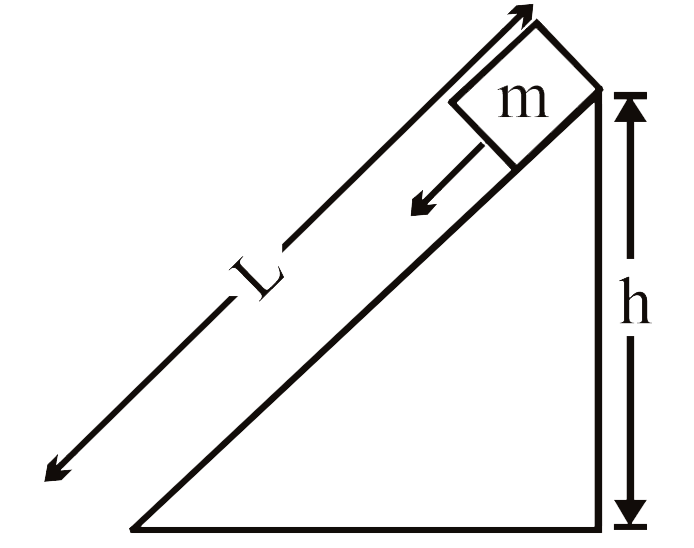A : rigid body can't be in a pure rolling on a rough inclined plane without giving any external force.
R : Since there is no torque providing force acting on the body in the above case, the body can't come in a rolling condition.
If both Assertion & Reason are true and the reason is the correct explanation of the assertion,
If both Assertion & Reason are true but the reason is not the correct explanation of the assertion,
If Assertion is true statement but Reason is false,
If both Assertion and Reason are false statements,
The correct Answer is:D
To analyze the statements given in the question, we will break down the reasoning step by step.
Step 1: Understanding the Statements
- Statement A: A rigid body cannot be in pure rolling on a rough inclined plane without giving any external force.
- Statement R: Since there is no torque providing force acting on the body in the above case, the body can't come in a rolling condition.
Step 2: Analyzing Statement A
A rigid body, such as a disc or a sphere, can roll down a rough inclined plane without the need for any external force. The force of gravity acting on the body will cause it to roll. The component of gravitational force acting down the incline is given by mgsinθ, where m is the mass of the body and θ is the angle of the incline.
Conclusion for Statement A: This statement is false because a rigid body can indeed roll down a rough inclined plane without requiring any external force.
Step 3: Analyzing Statement R
The reason provided states that there is no torque providing force acting on the body, and thus it cannot roll. However, the gravitational force acting on the body does create a torque about the point of contact with the inclined plane. The torque due to the gravitational force is given by:
τ=r⋅F
Where r is the radius of the body and F is the component of the weight acting perpendicular to the radius, which is mgsinθ.
Conclusion for Statement R: This statement is also false because the gravitational force does create a torque that allows the body to roll.
Step 4: Final Conclusion
Both statements A and R are false. Therefore, the correct answer is that neither statement is true.
- Statement A: A rigid body cannot be in pure rolling on a rough inclined plane without giving any external force.
- Statement R: Since there is no torque providing force acting on the body in the above case, the body can't come in a rolling condition.
A rigid body, such as a disc or a sphere, can roll down a rough inclined plane without the need for any external force. The force of gravity acting on the body will cause it to roll. The component of gravitational force acting down the incline is given by mgsinθ, where m is the mass of the body and θ is the angle of the incline.
The reason provided states that there is no torque providing force acting on the body, and thus it cannot roll. However, the gravitational force acting on the body does create a torque about the point of contact with the inclined plane. The torque due to the gravitational force is given by:
Both statements A and R are false. Therefore, the correct answer is that neither statement is true.
Similar Questions
A body is in pure rolling on a surface. Is it necessarily being acted upon by an external torque ?
View SolutionThree bodies, a ring, a soild cylinder and a soild sphere roll down the same inclined plane without slipping. They start from rest. The radii of the bodies are identical. Which of the bodies reaches the ground with maximum velocity ?
View Solution
Knowledge Check
- Question 1 - Select One or More
A disc can roll wihtout slippingg, without applying any external force on a
Arough inclined planeBsmooth inclined planeCrough horizontal surfaceDsmooth horizontal surface - Question 2 - Select One
When a body is lying on a rough inclined plane and does not move, the force of friction
Ais equal to μRBis less than μRCis greater than μRDis equal to R - Question 3 - Select One
When a body rolls without sliding up an inclined plane the frictional force is :
Adirected up the planeBdirected down the planeCzeroDdependent on its velocity
A body of mass m is released from the top of a rough inclined plane as shown in figure. If the frictional force be F, then body will reach the bottom with a velocity
 View Solution
View SolutionA body of mass m is kept on a rough fixed inclined plane of angle of inclination θ=30∘. It remains stationary. Then magnitude of force acting on the body by the inclined plane is equal to :
View SolutionA body of mass 10kg is lying on a rough inclined plane of inclination 37∘ and μ=1/2 , the minimum force required to pull the body up the plane is
View SolutionIf a constant force acts on a body initially at rest, the distance moved by the body in time t is proportional to
View SolutionThe condition that a rigid body is rolling without slipping on an inclined plane is
View Solution

